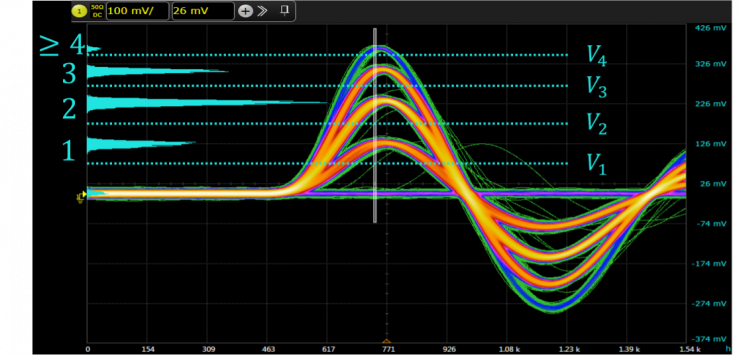A Fast High-Efficiency Photon-Number-Resolving Parallel Superconducting Nanowire Single-Photon Detector For Improving Heralded Single-Photon Sources
L. Stasi, G. Gras, P. Caspar, R. Berrazouane, M. Perrenoud, T. Brydges, H. Zbinden, R. Thew, and F. Bussières
Physical Review Applied, 19, 064041 (2023) &
Quantum Science and Technology, 8(4), 045006 (2023)
These works were a collaboration between the Quantum Technologies group at the University of Geneva and ID Quantique, also based in Geneva.
You can read the full articles here and here.
A large number of quantum technologies, such as photonic quantum computing, non-classical light-source characterisation, and quantum imaging require the high-speed detection of single photons. To this end, superconducting nanowire single-photon detectors (SNSPDs) have revolutionised optical quantum information processing. However, in their simplest implementation, SNSPDs are only able to distinguish 'zero' from 'many' photons; they cannot distinguish e.g. one photon from two photons. This lack of photon-number resolution (PNR) capability hinders our ability to take full advantage of some optical quantum technologies.

Alongside ID Quantique, our team have developed a novel PNR detector based on a high-efficiency P-SNSPD, demonstrating its operation in the first paper. The detector displays a novel architecture that ensures no electrical crosstalk or latching, so guaranteeing faithful operation of the device without altering the photon-counting statistic it generates. The team also developed an analytical model which fully describes the multi-photon detection probability, making no assumptions about the detector, so allowing the model to be applied to any type of multi-element detector. By first probing the detector with Poissonian light, the group retrieved the full map of multi-photon detection probabilities, using it to reconstruct the statistics of an unknown light source.
In a further publication, the group then demonstrated the immediate application of this P-SNSPD in quantum optics experiments by using it to significantly improve an existing heralded single-photon source (HSPS). HSPSs intrinsically suffer from multi-photon emission (i.e. emitting multiple photons rather than the desired single photon), which can lead to a degradation in the quality of the source. PNR detectors offer a natural solution to this problem, allowing multi-photon events to be detected, and so filtered out. By using their novel P-SNSPD, the group significantly improved an existing HSPS (which had previously used standard SNSPDs), showing a reduction in the heralded g(2)(0) of the HSPS by almost 27% for a fixed pump power.
This technology not only shows its immediate use to improving existing quantum optics experiments, but also paves the way towards fast, high-fidelity, and easy-to-use PNR detectors for many quantum technology applications.